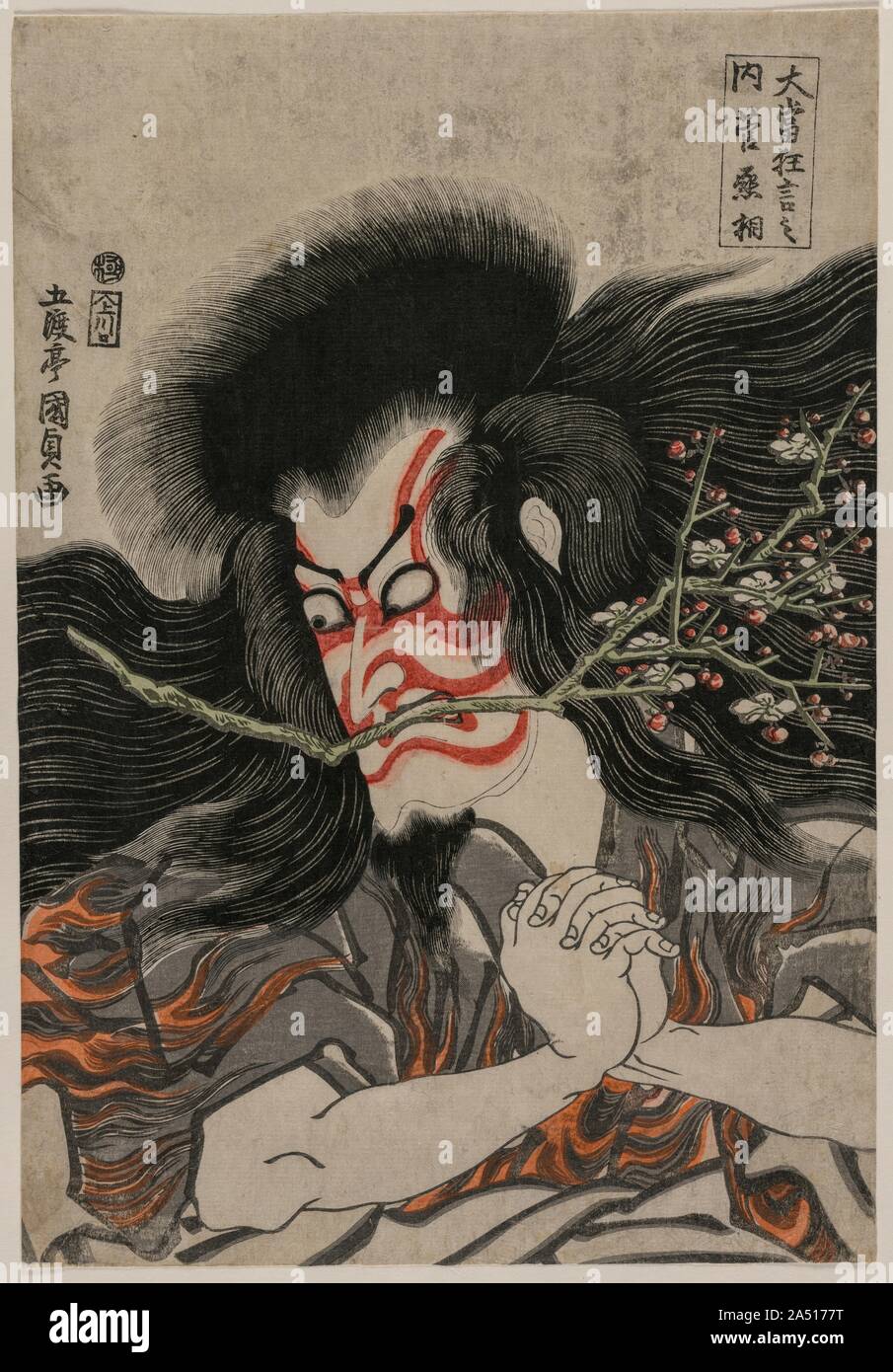Ichikawa Danjuro VII as Kan Shojo in the Mt. Tenpai Scene (from the series Famous Kabuki Plays), 1814. Here, the actor plays the role of an exiled statesman, transforming himself into a vengeful thunder god. The red-and-white make-up style— kumadori , or "shadow painting"—is characteristic of the aragoto manner of portraying heroic roles. The crossed eyes and clenched mouth—in this role a plum blossom branch is added—demonstrates the conventional mie pose used by Kabuki actors to express intense emotion at the most dramatic moment in the play. The audi

Image details
Contributor:
Heritage Image Partnership Ltd / Alamy Stock PhotoImage ID:
2A5177TFile size:
118.8 MB (7.8 MB Compressed download)Releases:
Model - no | Property - noDo I need a release?Dimensions:
5380 x 7721 px | 45.6 x 65.4 cm | 17.9 x 25.7 inches | 300dpiPhotographer:
Heritage ImagesMore information:
This image could have imperfections as it’s either historical or reportage.
Ichikawa Danjuro VII as Kan Shojo in the Mt. Tenpai Scene (from the series Famous Kabuki Plays), 1814. Here, the actor plays the role of an exiled statesman, transforming himself into a vengeful thunder god. The red-and-white make-up style— kumadori , or "shadow painting"—is characteristic of the aragoto manner of portraying heroic roles. The crossed eyes and clenched mouth—in this role a plum blossom branch is added—demonstrates the conventional mie pose used by Kabuki actors to express intense emotion at the most dramatic moment in the play. The audience applauds the actor’s ability to hold this pose, influenced by the stylized movements of the puppets in the famous Bunraku theater. This sensational transformation of the hero is the high point of the scene.